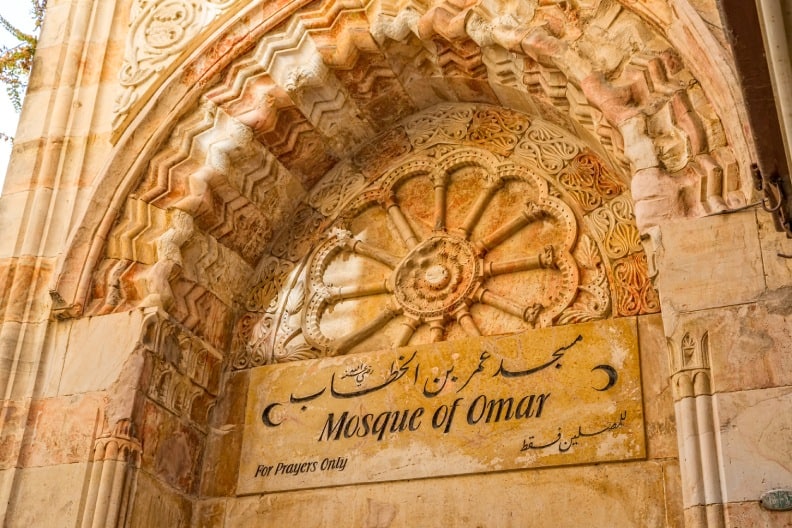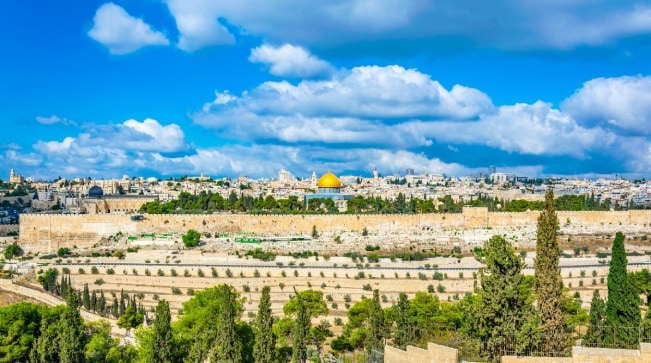The Mosque of Omar is an Islamic place of worship located opposite the southern courtyard of the Church of the Holy Sepulchre in the Muristan area of the Christian Quarter inside the Old City of Jerusalem. The Mosque of Omar is often confused with the Dome of the Rock on the Temple Mount. However, this far more modest mosque is not open to tourists and can be accessed only for praying.

The Mosque of Omar was built in the 12th century on the site where Caliph Omar Ibn al-Khattab accepted the city’s surrender from the Byzantines following a brief siege in 638 CE. The base of the mosque contains some Crusader masonry and has a square, 15-meter-high minaret built in the 15th century. The minaret was renovated some 300 years later.
Mosque of Omar: Some Historical Faacts
According to local tradition, when the Siege of Jerusalem occurred in 637 by the Rashidun army under the command of Abu Ubaidah ibn al-Jarrah, Patriarch Sophronius refused to surrender except to the Caliph Omar himself.
After arriving in Jerusalem to accept the surrender, Caliph Omar approached the Church of the Holy Sepulchre. Patriarch Sophronius invited the Caliph to pray inside the church, but Omar declined so as not to set a precedent and endanger the church’s status as a Christian site. Omar prayed on the steps outside the east side of the church outside instead.
Jerusalem Ultimate Guide

The Mosque of Omar was later built at that site by the Ayyubid Sultan Al-Afdal ibn Salah ad-Din in a shape to commemorate the prayer of the caliph Omar. After repeated destructive events that affected the Holy Sepulchre and Muslim mosques during the 11th and 12th centuries, the entrance to the Church of the Holy Sepulchre was moved from the east to the south of the church.

